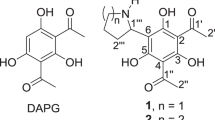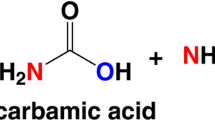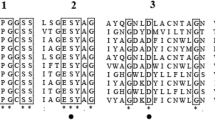Abstract
WHEN arylsulphatase (phenolsulphatase) acts on the salt of an arylsulphuric acid (for example, potassium phenylsulphate, C6H5OSO3K), the substrate undergoes hydrolysis. If the phenolic compound liberated on hydrolysis can be converted to a coloured product, the reaction can be made the basis of a method of detecting the enzyme. Earlier workers, using monoarylsulphates prepared from various phenols as substrates for the detection of arylsulphatase, have shown that this enzyme occurs in plants and animals. Its occurrence in bacteria, however, had not been investigated until recently, when Barber, Brooksbank and Kuper1 examined 160 strains of Staphylococcus pyogenes and 75 strains of coagulase-negative staphylococci for the presence of glucuronidase, phosphatase and arylsulphatase, using the monoglucuronide, diphosphate and disulphate of phenolphthalein as substrates. In only two strains of staphylococci was arylsulphatase detected, although the enzyme was found to be present in an aerobic sporing bacillus encountered as a contaminant and in a strain of Salmonella paratyphi B.
This is a preview of subscription content, access via your institution
Access options
Subscribe to this journal
Receive 51 print issues and online access
$199.00 per year
only $3.90 per issue
Buy this article
- Purchase on Springer Link
- Instant access to full article PDF
Prices may be subject to local taxes which are calculated during checkout
Similar content being viewed by others
References
Barber, M., Brooksbank, B. W. L., and Kuper, S. W. A., J. Path. Bact., 63, 57 (1951).
Whitehead, J. E. M., Wildy, N. P. L., and Engbaek, H. C. (forthcoming publication).
Evans, W. C., Smith, B. S. W., Linstead, R. P., and Elvidge, J. A., Nature, 168, 772 (1951).
Britton, H. T. S., “Hydrogen Ions” (Chapman and Hall, Ltd., London, 1942).
Author information
Authors and Affiliations
Rights and permissions
About this article
Cite this article
YOUNG, L., MORRISON, A. & WHITEHEAD, J. Bacterial Arylsulphatase. Nature 169, 711–712 (1952). https://doi.org/10.1038/169711b0
Issue Date:
DOI: https://doi.org/10.1038/169711b0
Comments
By submitting a comment you agree to abide by our Terms and Community Guidelines. If you find something abusive or that does not comply with our terms or guidelines please flag it as inappropriate.



